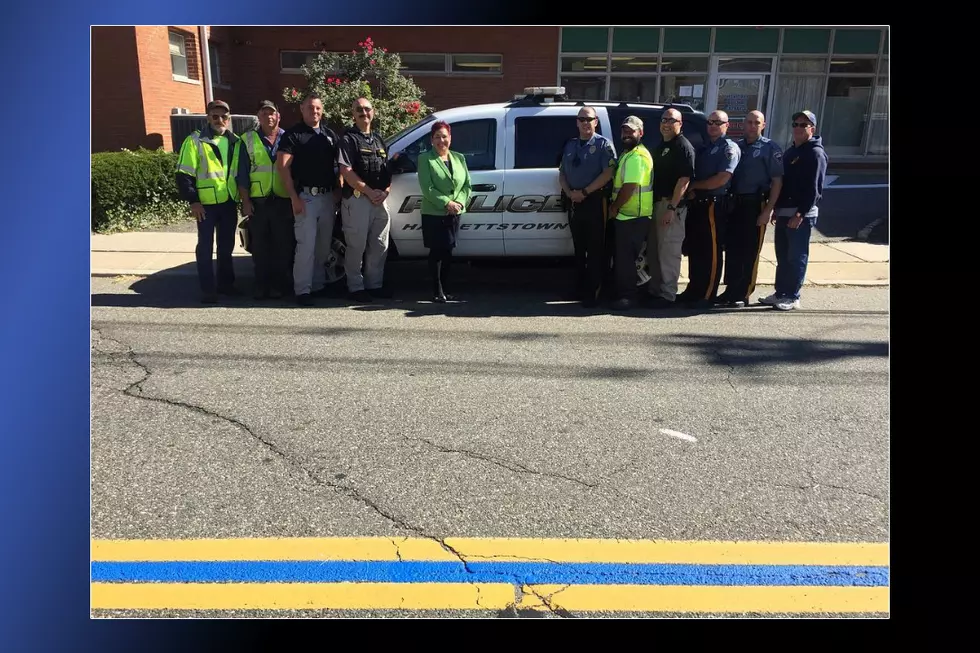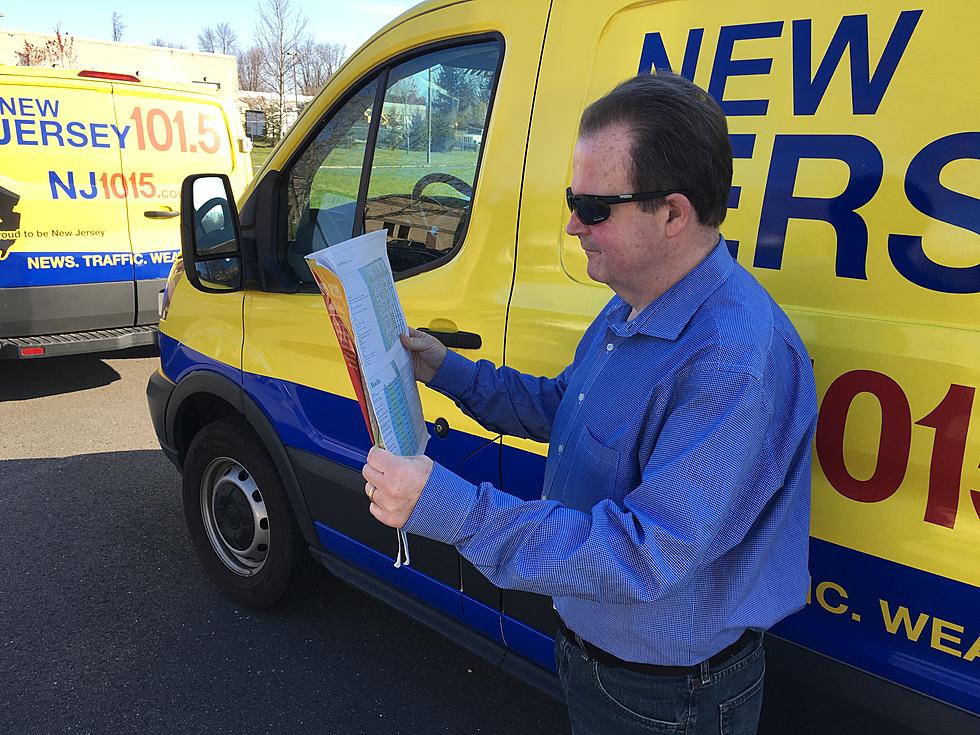![Major Shoulder Expansion Set for Garden State Parkway in Ocean and Monmouth Counties [AUDIO]](http://townsquare.media/site/385/files/2012/03/pwexpand.jpg?w=980&q=75)
Major Shoulder Expansion Set for Garden State Parkway in Ocean and Monmouth Counties [AUDIO]
Addressing safety concerns over traffic on the Garden State Parkway throughout Monmouth and Ocean Counties, the New Jersey Turnpike Authority will be starting a project to restore and improve shoulder and traveling lanes throughout seventeen miles.
A public information and public comment session was held in Brick Township on Thursday to introduce the plan which would widen shoulders and traveling lanes from Exit 100 to Exit 83 including Toms River Lakewood, Wall, and Brick Township. The purpose of the project is to create a safer road system in what a study by State Police along with the NJTPA found to be one of the most dangerous in the state.
In addition to the improvements to the shoulder, improvements will be done to Interchange 88 and 89, which would create a service-concept combining the interchanges and providing north and south bound exits on the parkway.
John Withers, Supervising Engineer with the Turnpike Authority says additionally since the project requires a number of detention basin's for water quality be built, "and that requires tree removal, and when you remove the trees that's up to the No Net Loss Policy to let people know what we're going to do."
Since the project requires 146 of trees along the parkway's edge be removed, The New Jersey No Net Deforestation Policy requires that any kind of deforestation be replaced or fee's be paid to the Department of Environmental Protection.
"What we generally do, rather than tie up a reforestation plan, which ties up the project. We pay the entire price as if we're not going to plant. That way when construction is done and everything is in place, we see where we can plant and we go back and we fill those sparse areas with trees. So it's a double bang for our buck, we may pay more in the No Net Loss fee, but that let's us get the improvement out get the safety improvement out which is to restore the shoulders in this area," said Withers.
Removing the trees in some areas will be important notes Withers since unkempt tree lines could be dangerous to drivers that need to exit onto the emergency shoulder lanes.
The issue of cutting down trees was a contention point for many who attended the session. Pete Hess is one of the residents on Todd Road in Toms River, a street that is the focus of the meeting because many of it's residents who sit as close as 150 feet by the parkway would have their buffer removed even more so.
For Hess, trees are the only barrier between his yard and the roar of the Garden State Parkway, and the possibility of more of them being cut down for a retaining basin worries him. "I mean my backyard will be basically nothing. It'll be about as wide as this room."
Hess has already seen past highway expansions take a toll on his property values, and laws require that potential home buyers be told about the expansion. That has only plummeted the values of the neighborhood more.
"If you go down Todd Road now there's two dozen people trying to sell before this thing went through," said Hess.
Like many of the residents who fear that the expansion will plummet their property values and quality of life, Hess asked for a sound wall be installed. However, because the project involves an expansion of the shoulder and not the addition of lanes a noise level evaluation has not been mandated.
Hess along with other residents who would be affected brought in a signed petition and made comments to the members of the NJTPA. All understood the necessity of the project, but demanded a sound wall be put up to prevent more noise and pollution.
Detailed aerial view maps were posted throughout the walls of the Civic Center were explained by various members of the consulting groups working on the project. On display were details about construction project on interchanges 83 and 91 which the NJTPA has a cooperative partnership with.
"We're going to show how all of those safety projects interrelate with each other," said Withers. "We're going to be going out with construction contracts awarded at the end of this summer and we're hoping to complete all construction within a two year period."
Since many of the areas of the Garden State Parkway being worked on are already devoid of shoulders in some areas, Withers notes that one of the challenges will be to manage traffic on the busy stretch of Parkway. "The first year is always the toughest because we'll get about half of the improvement in, the second half at least you have some of the improvements so things get a little better."
The project will keep the vast majority of lanes where they are, and expand the shoulders. Diagrams provided by the NJTPA show that currently typical lane conditions on both North and Southbound sides through exit 91 feature 11-foot travel lanes with 2 to 5 foot shoulders on either side. The proposed construction would expand the lanes to twelve feet, and expand the shoulders to twelve feet on either side.
Additionally there would be improvements to acceleration and decelerations lanes, reconstruction roadside borders, remove hazards and obstructions from the roadside clear zone, and widen or replace up to 31 bridges.
Withers say there might be some mild shifting on area's of the roadways that are in particularly environmentally sensitive areas, the roads will also be brought up to modern standards. "There might be some minor changes to the horizontal alignment, trying to cut down the crest curves. Most of the horizontal geometry is ok, but if we go into a twelve foot shoulder and it goes into a wetland, that's bad."
The construction will involve filling a lot of the high angle slopes in order to widen the shoulders. Withers says that they are trying to expand the shoulders wherever possible rather than installing guide rails.
"Guide rails is a hazard in itself," explained Withers. "But it's an acceptable hazard if there's trees or if there's a drop off or something like that. But with guide rails some cars will hit off of it and jump off back onto the road."
Noting you only want to do it where it's necessary like bridges very steep slopes. In addition to the filing and paving, Withers says that the lions share of the bridges will need to be replaced. "They're all over fifty or sixty years old and bridges over route 70 are way too small for route 70. The service road concept on interchange 88 will also result in a replacement of the bridges in the parkway over 70 so when the state has money they can do an improvement."
The cooperative agreement with Ocean County cost sharing on a replacement on Old Freehold, Church Road, and Chambers bridge road.
"It's not just a safety concern for the driving public on the public it's also on local roads and cross streets," said Withers.
He adds that he hopes that traffic won't be any worse than it is today. "We're going to do minimal shifting, look for ways we can build the shoulders with daily lane closures a little at a time a time. We're trying to reduce the amount of concrete barriers we have to install."
The construction is expected to begin at the end of summer or beginning of fall and be completed in 2014.
More From New Jersey 101.5 FM






![Grilling Gone Wrong – Top 5 BBQ Fails [NSFW- Language]](http://townsquare.media/site/385/files/2012/05/BBQ-Fail1.png?w=980&q=75)

